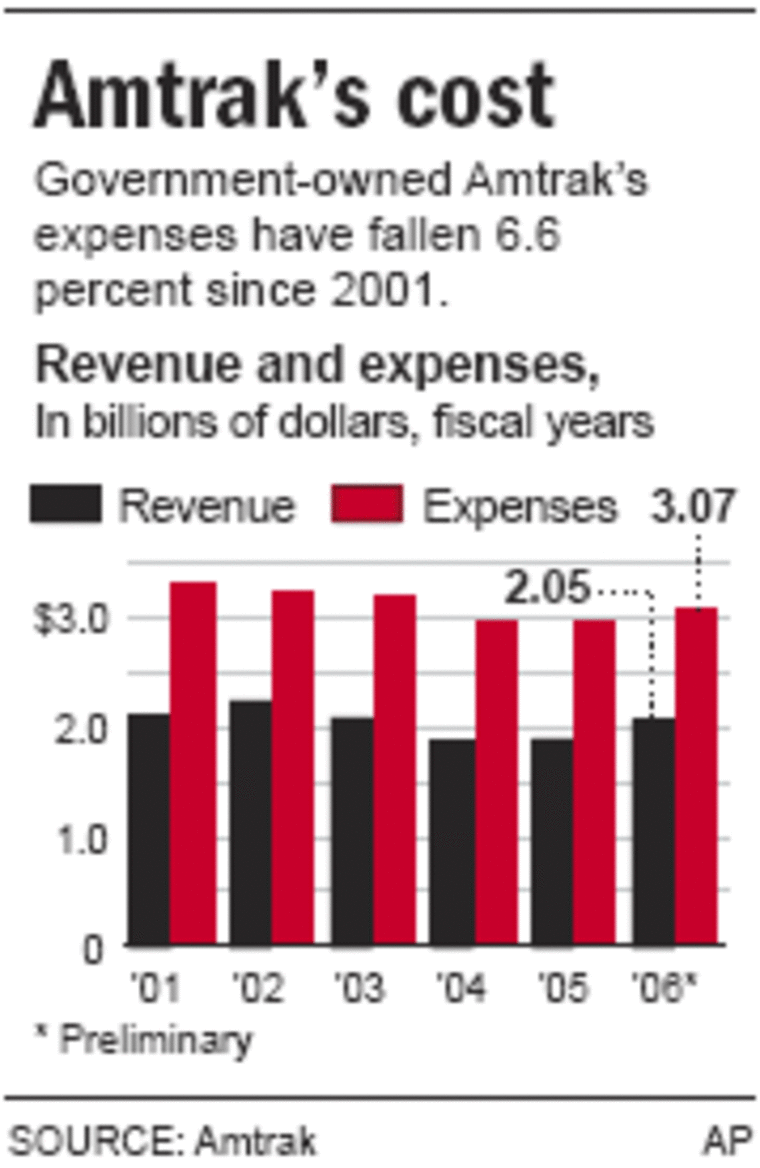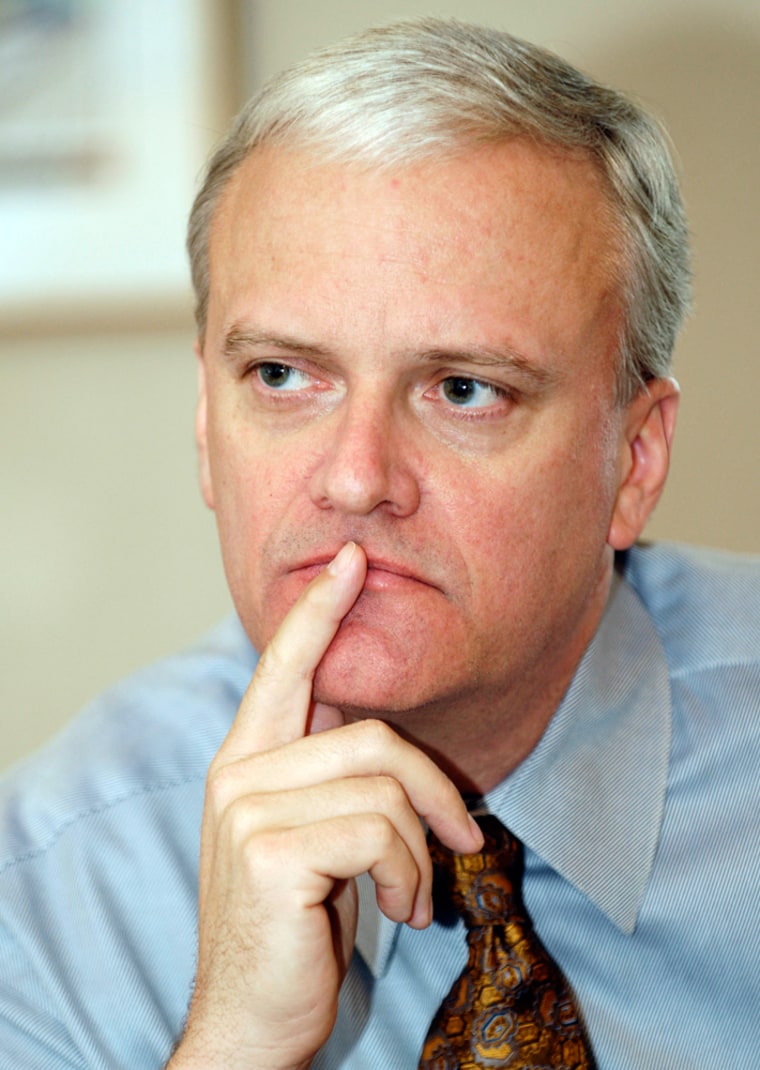Amtrak’s new president wants to upgrade the passenger railroad’s image and the tracks it shares with the nation’s increasingly busy freight rail carriers, and he expects the federal government to help.
Four months into the job, Alex Kummant said he found the much-maligned railroad in better shape than he expected. But he said it could still do a better job taking advantage of a growing appetite for rail travel fueled by high gas prices and highway congestion.
“There is a lot of good news to talk about,” Kummant told The Associated Press in an interview in his office atop Washington’s Union Station. “You have to build the Amtrak brand for people.”
Amtrak needs to work with states to expand service over medium distances and improve the long-distance trains that account for most of its losses, Kummant said. Government incentives to stimulate capital investment in the nation’s nearly maxed-out rail infrastructure are also key, he said.
The government-owned corporation reported record ticket revenue of $1.37 billion in the fiscal year ended Sept. 30, an 11 percent increase over fiscal 2005, with ridership ticking up 1 percent to 24.3 million passengers. The system, created in 1970 to take over declining passenger rail service, is heavily dependent on government funding; it received $1.3 billion from Congress, including a $485 million operating subsidy, for the 2006 fiscal year.
Kummant, a 46-year-old former freight railroad and manufacturing executive, said expectations that Amtrak could be self-sufficient are misguided. He noted passenger rail is subsidized throughout the world.

There could be room to partner with the private sector, he said, but added: “You need to walk before you can run.”
Amtrak supporters are hopeful the new Congress will pass legislation introduced last week by Sens. Frank Lautenberg, D-N.J., and Trent Lott, R-Miss., that would establish funding targets for Amtrak for the next six years. It would also create a program of capital matching grants for states that want to invest in “corridor service” — the term Amtrak uses to describe frequently traveled routes up to about 500 miles, such as the northeast corridor running from Boston to Washington. Currently, 14 states pay Amtrak for service.
Kummant said the shorter routes are Amtrak’s real growth opportunity.
“We can offer genuine solutions to public transportation problems with that type of service,” he said.
Rail service on such corridors can be competitive at 80 to 100 miles per hour, without trying to provide capital-intensive high-speed service, he said. Amtrak’s fastest train, the Acela Express on the northeast corridor, reaches 150 miles per hour, but such speeds require upgraded electrical systems and tracks.
A November report by the Government Accountability Office concluded that long-distance routes — such as the Sunset Limited from New Orleans to Los Angeles and the Empire Builder from Chicago to Seattle — account for 15 percent of riders and 80 percent of Amtrak’s losses, and provide little public benefit.
Kummant said he had no intention of abandoning long-distance routes, loosely defined as those longer than 500 miles. But he said he is working with Amtrak’s board of directors, made up of appointees of President Bush, to come up with a strategy that might include breaking some long routes into multiple state corridors.
Amtrak is criticized for the losses in the long-distance routes, but if those routes were eliminated, they would be very hard to re-establish, Kummant said. Still, he predicted future growth will likely come from corridor service, while long-distance ridership will remain flat.
One major challenge is that the nation’s freight railroads have been hauling record volumes and are starting to bump up against limited capacity, Kummant said. On most routes except the northeast corridor, Amtrak trains run on tracks owned by the freight railroads.
Kummant, who spent four years at Union Pacific Corp., said capacity issues won’t be solved unless public money is injected into the freight rail network, through tax credits or other means.
The Association of American Railroads has called for a 25 percent tax credit for any investment in new track or other infrastructure that would increase capacity. It also supports public-private partnerships to accomplish the same thing.
“Railroads are already investing very heavily in trying to increase capacity, but there are limits to what we can raise on Wall Street,” AAR spokesman Tom White said.
Kummant expressed skepticism about proposals to split off the northeast corridor, which accounts for more than half of Amtrak’s ticket revenue, and put it under separate management.
He said one such proposal made recently by the Alan M. Voorhees Transportation Center at Rutgers University would be difficult to implement. It would require the approval of eight states, the District of Columbia and the federal government, which also would have to assume Amtrak’s debt and provide money for rail cars, Kummant said.
At the same time, Amtrak has been performing well on the northeast corridor, Kummant argued. He said the Acela had been beating the airline shuttles in terms of on-time performance and showed a high level of operating skill.
Kummant’s predecessor, David Gunn, has said he was fired because of his opposition to an earlier proposal to split off the northeast corridor. Amtrak’s board said he did not move the railroad fast enough toward major reform on a number of fronts.
Ultimately, Kummant said, the goal should be expanding the corridor down the entire eastern seaboard.
“We should say, ’How do you have an eastern corridor that operates as well all the way down to Florida as it does between New York and D.C.?” he said.
David Johnson, assistant director of the National Association of Railroad Passengers, said the group is pleased with Kummant’s vision for improving the existing network and expanding it, despite some initial wariness over his lack of passenger rail background.
Kummant, who in 2003 left the freight rail business for stints at several equipment manufacturers, said he was happy to be back in the train world.
“There is nothing in my view quite as complex and, in the end, engrossing as a railroad operation,” he said. “I tell my manufacturing friends, take a roof off your plant and spread it over 500 miles, and have two guys at a time managing 5 million in capital unsupervised. It’s a real management challenge, and it’s a fight against the elements.”
